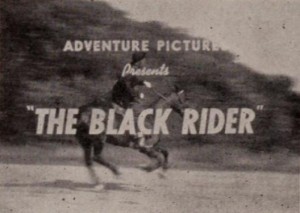
"For Louis McMahon, making movies must seem to be as natural as breathing — only far more fun. It stands out in his work, from the first dynamic opening of The Black Rider to the last dramatic gun fight, in which, inevitably, the villain is vanquished and the hero left triumphant. For this film goes back to first principles of the motion picture, both in its "horse opera" subject matter and in its unfailing sense of movement and compelling excitement. True to the old traditions, this young producer has turned seemingly impossible obstacles with cinematic trickery and imagination. For the present, his technical skill has not always been equal to his creative ambition, but the genuine urge is there in abundance." Movie Makers, Dec. 1941, 566-567.
"Al Londema's 'The Black Satchel,' is a pretentious photoplaylet in 8mm color, showing good camera work and direction." American Cinematographer, May. 1952, 224.
"Documentary on smoke pollution and the effects it has on people's health." (EAFA Database)
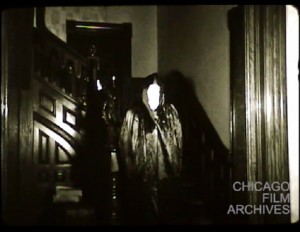
"A short mystery film from members of the Amateur Cinema League. A group of relatives gather in a haunted house for the reading of a will. Someone among them knows a secret about the house, and uses stories about the Black Widow to try and scare everyone away. In the end, their identity is revealed and all the secrets come to light. Title cards narrate the dialogue." Chicago Film Archives.
Visitors at a party receive a message from beyond that informs them, "There is a devil here!" and chaos follows. ‘Just before he died, the photographer of this film, Jack O' Hea, saw an article by Tony Rose, FACI, about the very first year of the Ten Best Competition and so this 'lost' film was rediscovered. It was made in 1934, just two years after Kodak had introduced the 8mm gauge. Music and 'devilish sound effects' were added by Jack O'Hea in 1978. These were revised and re-tracked for the IAC Library by the late Leslie Germany, FACI. The story, by John Burke, relates how the visitors at the Blackmores' party (one of whom is played by the director, Stanley Comber) receive a spirit-message that: 'There is a devil here!'. They link hands round the table and the hostess is attacked’ (EAFA Database).
"Film is about what happens when a two-minute power failure causes a blackout. Cameras caught before and after scenes in four houses, titled 'Daughter's Date,' 'The Ladder,' 'Cat and Dog,' and 'Women.' " Archives of Ontario.
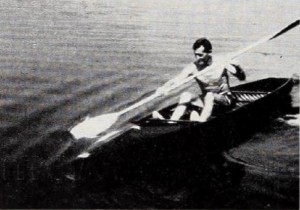
"There are precious few sails in this production which William Messner has called Blades and Sails. But there is a powerful lot of cinema in its smooth 650 feet of Kodachrome. And there is a wealth of flashing blades. The blades are bandied about by Ernest Riedel, a gaunt length of rawhide and muscle, otherwise known as the national, international and Olympic canoe champion. During the smoothly plotted course of Riedel's exposition of canoeing techniques. Mr. Messner demonstrates his own championship calibre behind the camera. His angles are so right as to seem effortless — though you suspect they're not. His follow-through is as deft as a sweeping blade and his cutting as crisp as a speeding birchbark. Blades and Sails is informative, entertaining and sound cinema — which is quite a combination in any man's movie." Movie Makers, Dec. 1951, 410.
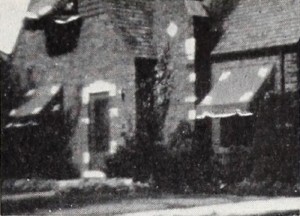
"A brief film designed as a trailer for home use rarely possesses the quality of general audience appeal. Grace Lindner may be justly proud of having achieved this elusive element in Bless This House. The film is a hymn of love, an ode in praise of home, the family, mutual understanding and other ingredients of the good life. That the theme is an emotional one is admitted. That it might have become painfully saccharine is granted. That it did not is due to the sensitive and restrained manner in which the filmer has presented her familiar scenes. Fred Waring's recording of the title song furnished the theme and is used as an integral part of the film." Movie Makers, Dec. 1950, 466.
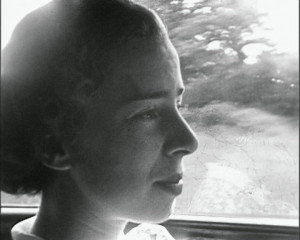
"The tragic story of a young romance torn apart by an ill-fated trip to the seaside. A man grieves the loss of his wife, urged by a friend to 'try to live off the memories of her'. But all he can recall are the events leading up to her death, shown as vivid, point-of-view flashbacks. A weekend trip to Brighton and rural Sussex is full of love and laughter, until tragedy strikes on the return journey, leaving the man alone and struggling to cope" (EAFA Database).
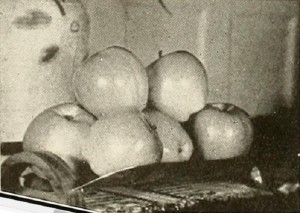
"Blossom Forth the Fruit is a straightforward, well made, carefully planned and well exposed instructional film, which tells how to care for apple trees and their fruit in all stages of growth. Its maker, William R. Hutchinson, has a thorough knowledge of apple growing, and he also had the collaboration of specialists from Cornell University and the Farm Bureau. The clear presentation of all the phases of treatment that are necessary to insure the growth of fine fruit is noteworthy. From the technical point of view, microscopic color studies of insects, parasites and blights furnish excellent examples of ultra closeup technique. Methods of spraying and other protective treatment of the fruit are shown in clearly presented detail. Because of its clear presentation and uniformly high technical quality, this film is worthy of the highest commendation." Movie Makers, Dec. 1941, 564-565.
Total Pages: 203